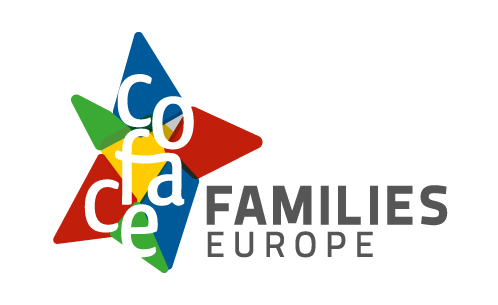Schools are key environments in which children acquire the necessary skills and competences to navigate throughout the adult world. As such, they carry a heavy responsibility in determining the future of our children. The past few decades have seen a major boom in information and communication technologies, especially with the advent of the Internet and wireless devices like smartphones.
There is no doubt that our world is becoming more and more “digital”, however, maintaining a healthy balance between our “online” and “offline” lives, or the time we spend behind screens and doing other activities, is more important than ever. COFACE-Families Europe works extensively on the topic of digitalization, and ensuring that all families, parents and children alike, maximize the benefits while avoiding the pitfalls. This extends to the positive use of digital tools in schools to ensure more inclusive learning. With the contributions of Clare Morvan (eTwinning) and Julien Léonard (UNAF) at our European conference on building sustainable and futureproof education systems, we explored challenges and solutions.
Claire Morvan, Communication Manager, eTwinning, Europe.
eTwinning, co-funded under Erasmus+, is a community of about 200.000 schools in Europe, offering a platform for staff (teachers, headteachers, librarians, etc.), working in a school in one of the European countries involved, to communicate, collaborate, develop projects, share and to be part of the most exciting learning community in Europe.
Inclusion is a sense of belonging, and this is what the eTwinning project strives to achieve. The eTwinning online portal allows for schools to connect across borders on a variety of issues. One example of the inclusive power of the eTwinning portal is the inclusion of migrants. Students and teachers from various countries could exchange and learn about the migration phenomenon, talk to migrants from other countries etc. It enables students to become actors in the learning process and radically change the way they learn. The eTwinning platform also allows for interaction with parents.
Julien Léonard, Expert, Union Nationale des Associations Familiales, UNAF, France
The recent law banning student’s smartphones in school has been widely discussed in the media. But this is not a “new” law. It was the case since 2010 but the law was never applied, hence the need for a revision of the law to try to implement it. However, it will still be complex given the autonomy some schools have.
Why did the French government decide to ban smartphones? Some research suggests that more than 2 hours of exposure to screens per day affects cognitive performances. Children spend on average over 6,5 hours a day on screens per day in the US, which is a lot.
The international recommendations are pretty much aligned with 2 hours of screen time per day, 9 to 11 hours of sleep and ensure that children have regular physical activities. Less than 1 child in 5 meets these recommendations in Europe.
One important question is also the type of activities in front of screens which children are involved in: watching a reality show or researching information on Wikipedia? While too much screen time on average decreases the cognitive abilities of children, this is affected by the type of screen time (for instance, learning fine motor skills by forming letters on a tablet). Thus children should be supervised by parents when given smartphones or similar technology and especially, not use these devices as baby sitters.
Ultimately, digital tools should complement traditional learning tools in schools. There are ways to blend digital and analog learning to achieve superior educational outcomes. For instance, learning to code, using some drawing applications, interactive applications to learn about math etc. Digital tools can also help include children with disabilities in order for them to enjoy the same experience in school as regular kids, for instance via text to speech or speech to text tools etc. Thus if children learn to use digital technologies responsibly, we can maximize the positive benefits.
Discussion and key messages
- Interaction between teachers and parents from different cultural backgrounds.
Sometimes it may be difficult for teachers to create a trustful and stable relationship with parents from different cultural backgrounds or of migrant origin. In this regard, teachers have to make an extra effort to create a special relationship with the parents and ensure that both the child and parents feel included in the school and in the country more generally. In this respect, digital tools can also help create this relationship. The eTwinning portal also has this kind of objective, building bridges between various countries, cultures, communities.
- Digital gap and digital access
It is clearly necessary to work on the digital gap, and make sure that parents have access to both the knowledge and access to the technology for them to be more involved with their children’s education. The eTwinning platform organizes several seminars and other online activites to help teachers and parents to be more confident in using digital tools.
But there are also other important questions arising from the use of technology in schools, like over-reliance on technology (some schools in Belgium, for instance, do not have books, only iPads). This poses clear challenges in terms of screen time (impact on eye sight for instance) and also commercial capture of children (promotion of a specific brand/operating system).
One idea would be to use specific hardware/software to address these challenges. For instance, using unbranded readers with tactile technology which allows to use stylus. This means students can still practice handwriting, do not damage their eye sight, and the software can be tailored to focus on educational applications.
It also ensures that certain analog skills (like hand writing) do not disappear in case they are needed in a world which may be short on electric energy.
- Programmed obsolescence and digital exclusion
There is clearly an issue with schools using the students’ own devices when integrating digital tools and teaching in the school. For students from lower socio-economic background, their devices (smartphones) might become obsolete relatively fast (lack of software support for instance, which will prevent them from running certain applications), and which would lead to a feeling of digital exclusion rather than inclusion.
To address this issue, schools must always provide the hardware devices, to ensure that students have equal access and benefit from the digital/analog blended teaching.
- Health considerations beyond the screen
While most of the research on the impact of digital devices on health have focused on the impact on eye-sight and the “blue light” effect of screens on sleeping patterns, there is new research looking into the electromagnetic “pollution” produced by wireless technologies, a syndrome called electromagnetic hypersensitivity. While the evidence is not yet clear, parents are encouraged to follow some simple and basic steps like turning off the wifi at night, putting smartphones into “flight” mode or turning them off before going to bed. Schools are encouraged to use LAN connections instead of wifi. Further research may find that aligning the different electromagnetic band widths with the Schumann frequency (the natural resonance frequency of the Earth’s magnetic field) might help in diminishing these symptoms.
Conclusion
Digitalization, the Internet and mobile devices, are here to stay. While many public institutions, governments, schools and teachers have struggled in finding the right “mix” between more traditional or “analog” teaching methods and the new tools enabled by digitalization, things are moving fast. Governments are developing new curricula taking into account digitalization and digital skills, teachers are harnessing the potential of these technologies for many purposes including blended learning (mixing digital with “physical”), inclusive learning, collaborative learning (cross-border with other schools), and many others, all the while minimizing the potentially negative effects on their students (screen time, developing critical thinking skills and resilience with regards to online content, etc). Many technologies are still in their infancy and more will need to be done to ensure they will be taken up in the most responsible and positive way for student’s healthy development. COFACE-Families Europe will continue to monitor these developments and provide insight and recommendations on how to best include digital (connected) tools in schools.
European resources
At the European level, some of the note-worthy initiatives on digitalization and schools include:
Commission launches new tool to support digital teaching and learning in schools
Digital Education Action Plan
Digital Competence framework 2.0
eTwinning
Digital Learning and ICT in education
___________________





